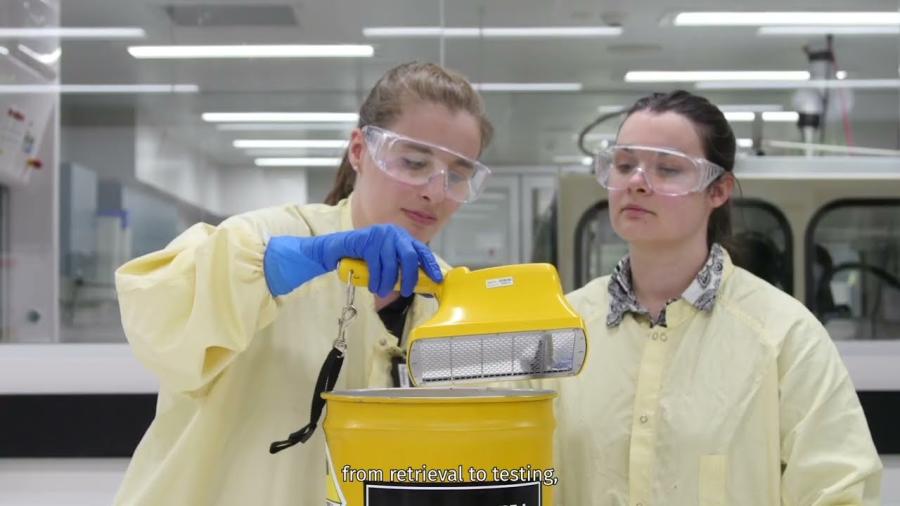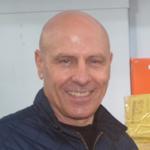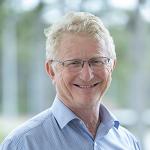

Published on the 7th March 2022 by ANSTO Staff
Key Points
-
ANSTO’s research on radioactive waste forms is world-class and ensures Australia has local knowledge and expertise
-
ANSTO Synroc® is a global first, Australian led innovation for the treatment of complex radioactive waste
-
ANSTO is central to the training and development of Australia’s experts in the safe management of radioactive materials
ANSTO has almost seventy years of experience in advancing an understanding of the management of spent nuclear fuel and delivering safe and reliable forms for radioactive waste.
The foundation of this expertise is based on the lifetime management of the former Moata and HIFAR reactors, OPAL multi-purpose reactor and nuclear medicine facilities, which produce intermediate and low-level radioactive waste.
Waste management achievements, products, and services
ANSTO Synroc®
One of ANSTO’s most significant achievements in this area has been the development of ANSTO Synroc® technology, an innovative, low-risk solution for the final disposal of complex intermediate and high-level radioactive waste.
ANSTO scientists have tailored the design of this waste form technology and associated process technology in response to the unique characteristics of waste. For this reason, ANSTO Synroc® can modify consumable products and services for nuclear waste and offers significant advantages over other methods of treatment for complex and intermediate-level radioactive waste.
It is regarded as global best practice in the treatment termination of complex nuclear waste, minimising environmental impact, reducing disposal volume, and lowering lifecycle costs.
Hot isostatic pressing is a crucial part of Synroc processing as it significantly reduces the volume of the stored waste.
The first industrial-scale ANSTO Synroc® facility is currently being commissioned in ANSTO’s nuclear precinct for the processing and storage of intermediate level liquid waste from on-site nuclear medicine production.
Nuclear waste solutions
ANSTO provides nuclear waste solutions for lower activity wastes that do not require treatment but need waste management support; from retrieval to testing; storage, to final off-site disposal and everything in between.
Safety drives all ANSTO processes, and the waste management teams assist clients in understanding Federal, State and international regulations, investigate storage and removal options, and develop safety management plans.
Research
Early research on radioactive waste chemistry
ANSTO also undertakes research to support its waste form engineering program in Synroc® waste forms and more fundamental aspects of the complex chemistry of radioactive waste that make it especially challenging with a requirement for dedicated infrastructure.
ANSTO has the only licenced and permissible infrastructure in Australia with expertise to handle a wide range of complex radioisotopic, physical and chemical forms of materials found in waste.
These facilities include an actinide handling glovebox, nuclear materials fabrication bay, hot cells, active electron microscopy, among other testing and sample preparation laboratories.
ANSTO also has dedicated expertise and facilities that include ion irradiation and implantation, neutron scattering and synchrotron X-ray and lab X-ray instruments for research on radioactive materials, including waste.
Ion irradiation can safely mimic the effects of radiation when studying radioactive waste or new waste forms.
Research on existing and new waste forms is underpinned by capabilities and expertise in the development and characterisation of nuclear materials to ensure their safety, long-term stability and proliferation resistance.
A broad set of specialist capabilities are available for the synthesis, processing, characterisation, modelling, and other theoretical aspects of waste forms.
Materials scientists at ANSTO, in collaboration with international specialists, are investigating how volatile species such as iodine are captured and immobilised in solid durable matrices to understand their performance in long-term storage.
In another research program led by Dr Yingjie Zhang, one of the most accomplished scientists in Australia who works in actinide chemistry, the group investigates the structure and behaviour of actinide compounds found in waste and their long-term interaction with encapsulating materials— contributing to a fundamental understanding of liquid and solid wastes.
Characterising the behaviour of minor actinides and lanthanides in the treatment of solid and molten salt spent fuels is another area of robust research activity.
Types of waste at ANSTO
Around 80 per cent of radioactive waste produced at ANSTO is directly associated with nuclear medicine production.
The remainder is associated with work as diverse as environmental research, silicon irradiation and industry research.
The majority is low-level waste – such as gloves and gowns used by nuclear medicine technicians. Much of this is held at ANSTO until it is no longer radioactive, then disposed of through ordinary waste disposal routes.
The remainder, intermediate level waste, is being safely held at ANSTO until the National Radioactive Waste Management Facility is established.
Read about recent research on radioactive waste, nuclear fuel and waste forms.







